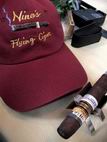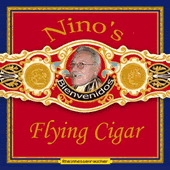Visiting The Despalillo
5 Dec
 How wrong I was about not needing to see another despalillo ( centre stem stripping ) again in Cuba.
How wrong I was about not needing to see another despalillo ( centre stem stripping ) again in Cuba.
After all I had seen enough despalillos in the factories to last me forever. Every factory has a despalillo to remove the centre stem from the wrapper ( capa ) leaves – so where was the unique selling point of visiting yet another one ?
Besides, we had just arrived the night before, were tired and out of synch.
The invitation to visit the despalillo had come from a private party and they were taking Hannes, Norbert, Yannick and me to see it. A very kind gesture.
We met at 10:30 and waited for the others to arrive.
Before driving off, of course, cafecitos and tabaquitos were de rigueur, mandatory sustenance so to say.
And so it was way past noon when we finally took off.
The projected 40 minutes driving time extended to an hour, our 4 car convoy was south of Havana past San Antonio de los Baños and …. lost.
OK, that’s when I started swearing and cursing my luck, being hungry, lost and hot out in the Cuban boondocks to see a freaking despalillo.
Why had I agreed to this absurdity ??
But the guy who was going to guide us to Quivican was finally found at a crossroads and a five car convoy set out again through disused dirt roads and lots of empty and fertile countryside.
A couple of things made an impression on me – passing a village called La Salud I noticed that the first building was a large cemetery and then we passed an ambulance, so apparently not much health to be had in La Salud.
The second absurd sighting was an abandoned SAM 7 missile site. OK, I know that San Antonio houses a large air force base but you don’t leave that kind of hardware out in the back yard …
And then we were finally at the Despalillo Eduardo Garcia Delgado in Quivican.
We were expected, led to the main office and the very friendly lady director welcomed us and offered cool pineapple-juice.
Through her short speech it became obvious to me that this was no regular despalillo.
Indeed – it was a despalillo for tripa and capote only. Filler and Binder.
And not just that, but it was also were the wetting process took place for this raw material.
A delicate and complicated wetting process that is done according to the 3 Fortalezas of the tobacco. The 3 strength grades.
That meant that all raw tobacco, supplied from the vegueros and already fermented, was taken out of the pacos and sprayed delicately with water. According to its fortaleza a precise percentage of water is applied. Then a 72 hr drying period takes place.
Then the leaves are laid to rest on wooden planes in the first floor of the giant warehouse.
After that process the leaves are stripped of the centre stem and sorted according to size using a wooden paddle similar in shape to a tobacco leave.
Then comes the planchado, the “ironing” or pressing of the leaves. This is done upstairs on a vintage press block.
The leaves are then placed in Tercios de Palma, packed in palm bark and then proceed from there to the main Almacen de Materia prima, tobacco warehouse, to be distributed from there to the factories.
It was a highly interesting and educating visit, something I had not expected at all. Very eye opening to see this fascinating process that I ( or rather we, as the others also had not seen this process ) didn’t know exists.
And exist it does for ages.
This particular despalillo was opened in 1953 by Mrs Batista, the wife of Fulgencio, president and dictator in those days.
Intriguing also to see the tobacco leaves in barrels. I neglected to ask about this storage method/phase, but will certainly do so next visit in February with the group when we are back in Quivican.
Again, it was an extremely interesting visit and it offered an insight into yet another of the many processes that tobacco goes through in order to become a quality cigar.
I was so fascinated by this simple, clean and modest enterprise that I agreed to visit a nearby ( 2 blocks away ) cigar factory.
It was worth our while, this particular factory was basically a miniature example of what is done in the large Havana factories.
But that’s left for the next report.
Nino












































